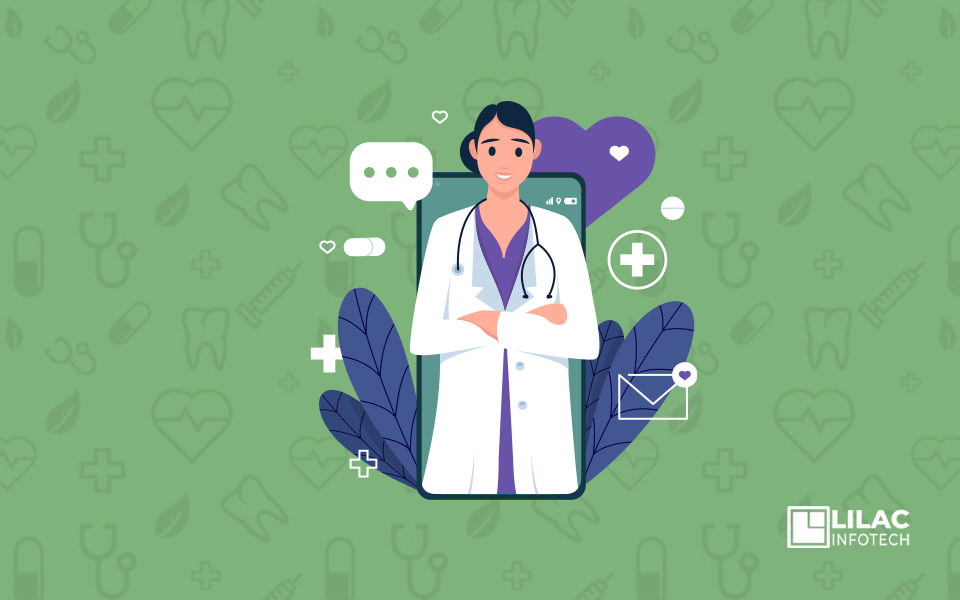
Often laser operations are the perfect way to screen a blood clot that leaks. In a longer time than any other process, it's quicker, cleaner, more efficient, and less costly.
For certain parts of our healthcare system telehealth is like laser surgery. In the long run, it's fast, cleaner, efficient, and cheaper.
The importance of technology in various sectors of industry is crucial to recognize in today's age. Technology has been introduced by various verticals in the medical sector and the advantages are known. Smartphones can conveniently access healthcare and other emergency facilities. Tracking, regulating, and monitoring various patient cycles such as medical consumption, rehabilitation, and medication have become easier. Over the years, thanks to technological progress, the contact distance between patients and doctors has been reduced.
In the last two decades, technology has revolutionized several markets in the country. Inside the medical sector, the start of revolutionary and new advances in technology has significantly changed and telemedicine has become a means of transforming play for people worldwide. Telemedicine penetration has grown substantially over the last decade, while reliability and accuracy have been somewhat concerned. Basic medical training offers providers a video chat for the diagnosis and treatment of mild conditions such as pharyngitis, sinusitis, and upper respiratory diseases.
Telemedicine benefits
Telemedicine is internationally recognizable and the development of technology does not preclude visits to conventional physician professionals. Without the involvement of the patient, there are a few diseases that cannot be diagnosed. However, it is convenient to treat patients without being present in the room, with information such as the medical history of a case, the visual examination, and the interview with the patient along with the pattern recognition training provider.
Often, when telemedicine cannot be used for the diagnosis of a problem, it is a reasonable starting point for the procedure. Far from the globe of the future, licensed doctors will have the opportunity to provide safe and effective health care. A patient won't wait for telemedicine to start in a row or turn.
Telemedicine’sappeal is not limited to time and costs savings. In the monitoring and analysis of comatose patients, virtual treatment systems play an important part. These patients are also helped to prepare their health plans.
In the last decade, activities have grown and progress in the medical sector has further driven business growth. As penetration rates increase, telemedicine technologies grow rapidly. The advantages of this technology improve the medicine delivery application market's prospects.
Some benefits of Telehealth
Telemedicine helps:
1. Patients and their families –
- When a patient and family have to talk to a psychiatrist about test outcomes or aftercare, an individual appointment is replaced with a videoconference.
- Store and forward removes an office appointment where a patient's rash has spread.
- If a patient has a debilitating illness to handle. And since contact to a doctor's office is more regular, there may be less fragmentation of treatment when a patient is forgotten or delayed. Increased participation and ownership of the wellbeing of patients.
- In cases such as this, telehealth is the most reliable and effective medical supply. It is the right treatment with the right physician at the right time and place.
- If a patient will communicate remotely with his health care staff, he can save time, money, and hassle.
By avoiding traveling, patients save time and money. By keeping your own home comfortable and safe, you can reduce tension. The healthcare system is, therefore, more efficient and satisfying. Patients are in turn able to receive better health coverage quickly and easily in remote areas.
2. Doctors and other healthcare providers –
The effects of telehealth on the patient base of medical practitioners – particularly in rural areas and notably on specialized facilities such as counseling, psychiatry, dermatology, audiology, and ophthalmology – are similar. Specialists prefer not to specialize in rural regions because the economies are so limited that they are inefficient. Telemedicine helps experts in any pocket in their state to treat distant patients.
Telehealth often impacts physician patients – especially rural patients – and specialized facilities such as counseling, dermatology, audiology, and ophthalmology. Telehealth is a possible patient basis. Specialists prefer not to work in rural regions and economies are so limited that this model is impractical. Telehealth requires clinicians in any pocket in their state to access distant patients.
More options for primary care and specialist services are offered like you can use video conferencing to reduce travel time between health care establishments, and also costs associated with continuing education. Providers can increase their possible customer pool considerably, and improve the quality of rural health by taking them at lower risk of burnout without any extra travel, as they can communicate well with patients and handle them more effectively, and also can take part in training and education more conveniently without going to multi-day out-of-state activities.
How e-health app helps patients?
How can you make a Healthcare App ?
3. Healthcare facilities
Telehealth technology is a four visible metrics laser surgery for health facilities. No shows are due to the fact that patients are more involved with their treatment staff. Readmissions have decreased after RPM and online visits help people more efficiently treat health problems. A new, creative hospital offers a video call to the patient family members to ask questions and also get aftercare instructions from physicians, nurses, and other care team members. The family and patient involvement of this sort will increase conformity with aftercare orders, thus reducing revision. Transfer to the off-network facility (and related revenue loss) decreases because remote expert consultations can safely decide whether a patient is to be transferred to another facility. Costs are decreasing because online visits are cheaper than urgent care and ER meetings.
Equipment has fewer no-shows. Readmissions of hospitals decline. Hospitals are losing fewer patients and lower incomes for off-grid moves. Equipment saves money by virtual tours.
Importance of telemedicine in healthcare
We spoke to individuals and organizations about the opportunities of telehealth. Let us look at how the whole healthcare sector is affected by telehealth. The grim forecasts about the dismal future of Medicare and the uncontrolled expense of prescriptions have all been heard. Will telehealth benefit or is the financial crisis beyond the laser surgical impact of telehealth? Now we know that not everyone who is sick is just as ill. Not everybody needs expensive hospital services. A physician or nurse will "see" the patient with a live videoconference feed as effectively.
In addition to allowing healthcare physical capital to be more effectively used, telehealth also allows the sector to make more use of its human resources. Telemedicine tackles primary care and specialist physicians' deficiencies by making providers work more effectively. When suppliers are more effective, more patients are treated at reduced costs and in less time. The net result is: more patients have access to the right treatment with the right service at the right time and in the right place.
Some telehealth challenges
So how do we speed up telehealth adoption?
The administration of health resources and services reports several factors which delay the transfer to telehealth to provide specialized treatment.
- Elderly patients will surely be reluctant to adapt to telehealth
- Households with lower incomes have fewer machines and less telephone service.
To wrap up
Telemedicine helps you improve access for remote patients to specialized services. It helps reduce rates of re-entry. Also, there are better chronic condition controls. There is an increased trust with patients and doctors. Telehealth infrastructure is improving. Audio, crisp video, and trusted hardware and software are provided every year.
And telehealth infrastructure is also improving. Audio, video, and more stable hardware and applications come every year clearer. Every year! Telemedicine is not future science. It is here now, and we are responsible for creating, improving, and innovating with it.



















Telemedicine is crucial for enhancing healthcare accessibility and care quality in rural regions. As technology progresses, <a href="https://saksham.health/">Telemedicine </a> will become increasingly pivotal in transforming healthcare access for rural populations.